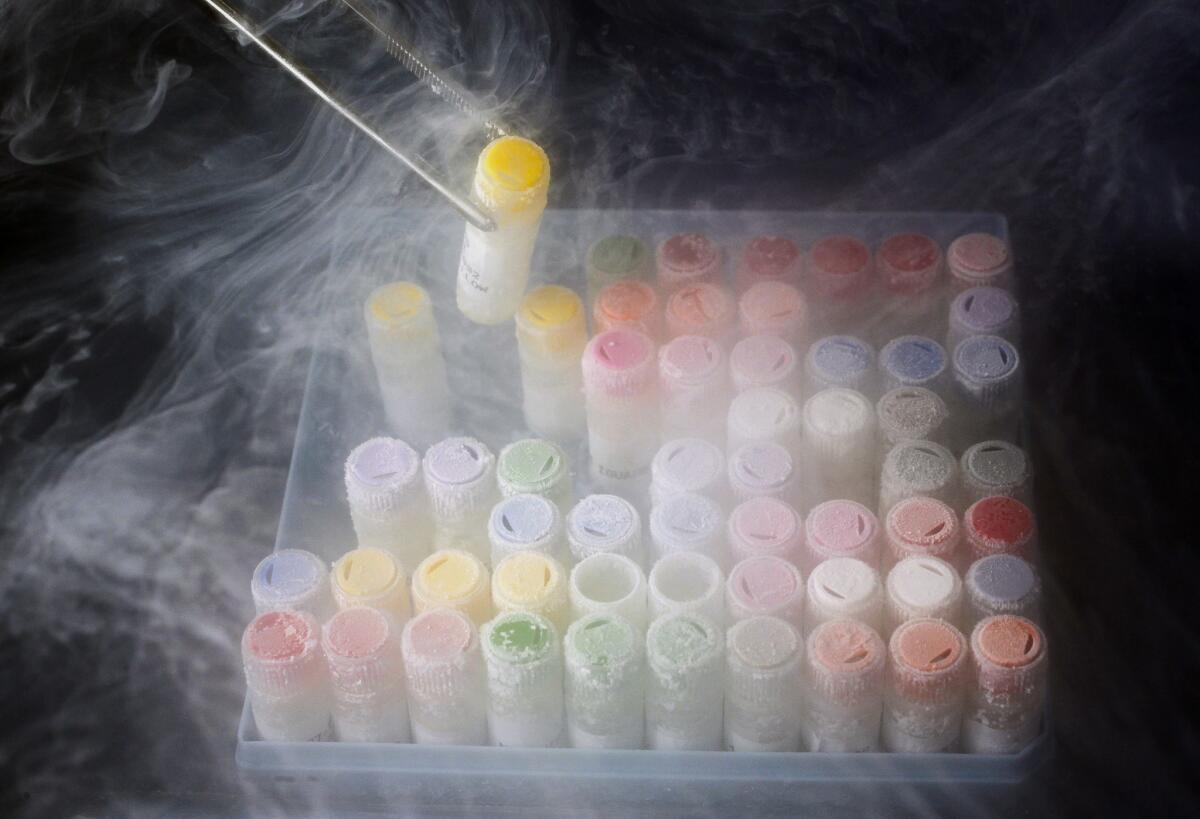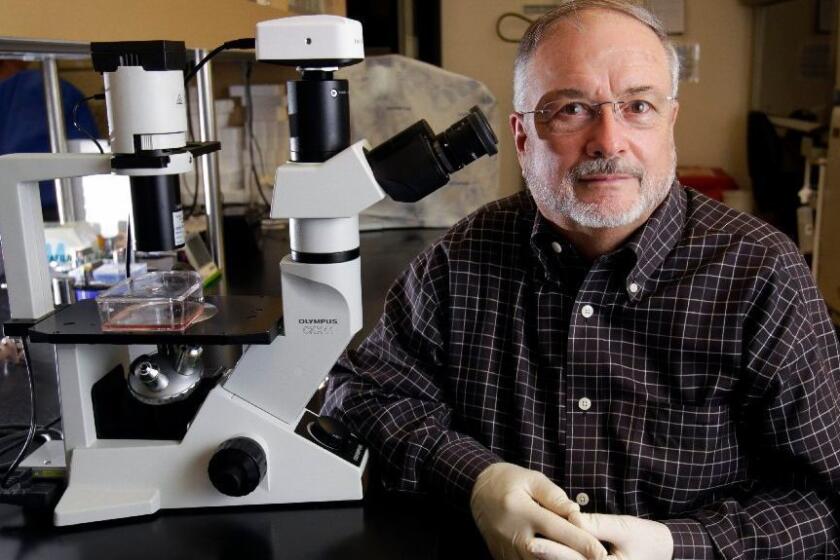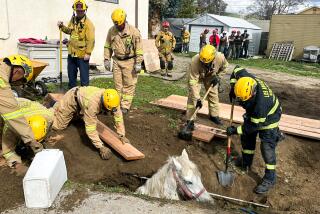San Diego Zoo scientists revive cells from 40-year deep freeze to clone endangered horse
- Share via
SAN DIEGO — Kurt looks and acts like any other young horse. He scampers and strides on springy legs, testing their strength. When it’s time to recharge, he nuzzles up to his mother for some nourishing milk.
But Kurt is no ordinary colt. Kurt is a clone.
The 2-month-old is a Przewalski’s horse, a species native to central Asia that went extinct in the wild and is still critically endangered, with only about 2,000 remaining.
Researchers from San Diego Zoo Global, the not-for-profit organization that operates the San Diego Zoo, have high hopes that Kurt can help turn things around for his species. He was cloned from skin cells taken from a stallion in 1980 and safeguarded at the Frozen Zoo, the organization’s repository of 10,000 cell lines from more than 1,100 species and subspecies.
Less than one month after his death, Ranchipur, the 50-year-old Asian elephant, was entering the next stage of the San Diego Zoo’s circle of life.
“By ‘bringing cells to life,’ if you will, making an animal out of a cell, we can bring back a portion of the gene pool that would otherwise be lost,” said Oliver Ryder, director of genetics at San Diego Zoo Global.
It’s the first time anyone has successfully cloned a Przewalski’s horse, which is only the third species San Diego Zoo Global has ever cloned — joining the gaur and banteng, two endangered cattle species cloned in the early 2000s.
Gallop poll
Every Przewalski’s horse alive is related to 12 wild ancestors. That limited gene pool doesn’t bode well for the species, as it takes genetic diversity to adapt to habitat changes and fight off new diseases.
So researchers were excited to find a stallion with pieces of DNA that were largely missing from the rest of his kind.
Think of it this way: Each of your parents passed down half of their genetic material to you, which means there’s a half you didn’t get from each of them. If you have a sibling, that person probably got at least some of the missing half. And the more siblings you have, the more DNA your parents have passed down to future generations.
This particular stallion’s ancestors hadn’t reproduced as much as other Przewalski’s horses, so he had rare bits of DNA that would be lost forever if they weren’t passed down in some way.
That realization kicked off a partnership between the San Diego Zoo, Bay Area conservation group Revive & Restore and Texas-based company ViaGen Equine, which has experience cloning horses.
For 40 years, the stallion’s cells sat frozen at minus 320 degrees Fahrenheit — colder than an evening on Mercury. Researchers revived the cells and fused one with an unfertilized egg from a domestic horse. Because scientists had removed the egg cell’s nucleus, the part that holds its DNA, nearly all of the genetic material came from the stallion.
The team then transplanted the egg back inside the horse, which served as a surrogate mother. It’s the same method that was famously used in 1996 to clone Dolly the sheep and has since been used to clone cattle, cats, deer and horses, among other animals.

Horse Play
Kurt was born Aug. 6 at a Texas veterinary center owned by one of ViaGen Equine’s partners, and he’s still there. He was named after the late Dr. Kurt Benirschke, a UC San Diego geneticist who was pivotal to the creation of the Frozen Zoo.
The plan is to eventually bring Kurt to the San Diego Zoo Safari Park, where he’ll join the park’s 14 Przewalski’s horses as part of a conservation and breeding program.
But the facility won’t be trotting him out any time soon, according to Ryder. That’s because Kurt needs at least another year with his surrogate mother. At that point, he’ll need to learn how to interact with other young horses. Only then will he be brought to the Safari Park, where, researchers hope, he’ll sire healthy offspring that perhaps can one day be returned to the wild.
These types of efforts take generations, says Megan Owen, San Diego Zoo Global’s director of wildlife conservation science, but are vital.
“The genetic diversity associated with these breeding programs is critically important for those small populations in the wild,” she said.
Wosen writes for the San Diego Union-Tribune.
More to Read
Sign up for Essential California
The most important California stories and recommendations in your inbox every morning.
You may occasionally receive promotional content from the Los Angeles Times.













